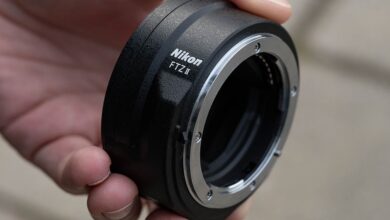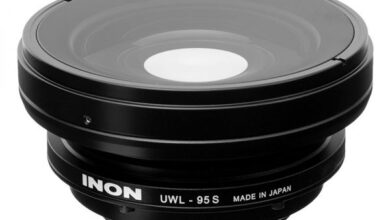How to improve Fujifilm X-T4: Canon user’s perspective

I picked up a Fujifilm X-T4 about five months ago to use primarily as a backup camera and for street photography, video and home use. Although I shoot with the Canon system in my studio, I fell in love with Fuji cameras years ago when I bought an X-Pro1 and a few X lenses. In this article, I offer a word of advice. friendly review and some suggestions for Fuji to improve on an already great camera system.
This is not a comparison of X-T4 with the EOS R5, but my criticisms are largely based on my experience using the R5. Now, I realize that some people may think it’s unfair to compare these two cameras since they both have very different price points. However, since they’re both high-profile professional models, I think it’s fair to have similar expectations for performance.
Auto focus
I’m sure this isn’t news to anyone, but there’s still a lot of room for improvement in Fuji’s AF system. With mirrorless camera options from companies like Canon, Sony, and Nikon, featuring near-perfect autofocus systems, Fuji still has a way to go. Whether in stills or video, autofocus tends to be a bit tricky, especially when using tracking. Sometimes it just doesn’t want to focus and freezes for a second, or it hunts and pecks while trying to lock onto the subject. On the other hand, when using my R5, it never fails. Eye tracking is near-perfect, and when I use it for video, I don’t even worry about whether it locks onto objects. Overall, though, the AF system in the X-T4 is very good, and the interface works just as well. However, as Fuji rolls out new camera models, this is an important area where I think they need to show a big improvement.
Menu system
The menu system in the X-T4 is good, but there are some annoying points. For example, if you scroll to a specific option in the menu and select it, the next time you access the menu, it will automatically go back to your last “My Menu” setting. I’m not sure there’s a way to change this, but so far, I haven’t been able to. This is extremely annoying because often enough, I will go to an option in a menu (that is not part of a custom “My Menu” setting), make a change, and then immediately want to go back to the same menu to edit the settings I made. Instead of tapping the menu button and starting from where I left off, it goes back to the most recently used setting in “My Menus”. It’s one of those little things that adds up to a lot of effort and I think having the menu open where you left off is much more of a priority.
Another aspect of the menu system that has great potential, but that’s okay, is how you use the physical dial and the menu together to fine-tune settings. For example, there’s a dial on the top plate of the camera to adjust the actuation from single low to continuous low, continuous high, bracketing, and more. However, you also have to access the rear menu screen to tweak options like frames per second, frame parameters, etc. This would be a perfect system if the menu screen automatically popped up later. when changing the physical mode dial at the top. After that, it will be easy to fine-tune the settings. As such, you had to change the knob, then find the “Drive Settings” menu to make further adjustments, which turned out to be a time-consuming process.
Battery life
To be fair, I hold this critique with the R5 as much as with the X-T4, but the R5’s battery life is better in my experience. While the X-T4’s battery life is good, it’s not great. And the last thing I want is a large, bulky grip as this eliminates camera portability. In the past, using a DSLR camera, I barely had to change the battery, and usually one battery could get me through the day. Of course, mirrorless cameras consume more power, but that aside, I think battery life needs to be improved. The first night I got the camera, I took it out for street photography on a full charge. After a few hours, the battery indicator turned red, which surprised me. Luckily, there are shops in some subway cars, so I can save a little more electricity to get through the night.
Buttons and dials
One of the main reasons I bought this camera is because of the physical buttons and dials, especially the shutter speed dial, aperture ring, ISO dial, and excellent manual focus capabilities. The shutter speed, ISO, and exposure compensation dials are very well constructed and don’t slide easily from current settings, even when unlocked. However, some dials can be significantly improved. The front and rear command dials are the most complicated. They have a dial as well as a press option, and usually, when you rotate the dial, it will accidentally press down, picking up something you don’t want. This can be remedied by simply fixing the dial. Same goes for the AF/MF switch on the front of the camera. I like this classic method of adjusting focus mode, but sometimes, I accidentally move the switch. Finally, the AF selector switch is one that I think should be redesigned. Unlike the multi-controller on my R5, this dial is too small and doesn’t stand out enough for a frequently used switch. Response is also a bit slow when adjusting the AF point. A larger, clearer dial makes it much easier to find and change settings and autofocus points.
Contrast in live view
The main way I use the X-T4 is through the viewfinder with exposure simulation enabled. Sometimes, I use the monitor to take pictures, but more often than not, I prefer the EVF, whether for concerts, street photography, or family photos. The problem I have is that the EVF and the LCD do not match in contrast. I adjusted the EVF setting so it was as close to the LCD as possible, but it’s still not perfect. This can be jarring when reviewing an image that looks rich and contrasty at eye level, but gets quite flat when pulled up on the screen. I don’t have this problem with my R5 or even with my X-Pro1.
Sensor size and resolution
As with any new camera, I expect the latest Fujifilm X to feature an improved sensor and higher resolution. But to be honest, this is the least of my concerns as the image quality is already excellent. I also doubt that Fuji wants to invest in a full frame camera because they’ve built a great system around APS-C and medium format sensors, and I don’t think this is a matter of necessity. most of us when shooting. with the X-T4 at this point. Don’t get me wrong, it would be great to see full-frame sensors in the Fujifilm X’s flagship camera, but I think their energy is best spent elsewhere.
 Small changes make big profits
Small changes make big profits
The good news is that everything I’ve reviewed in this article has minor changes. This means that in the X-T5 (or whatever it will be called), if these changes were used, the camera could be really special and appeal to a wider audience. And, to be fair, X-T4 is already a special camera as it is. But, I think it could be even better, and as a Fujifilm fanboy, I’m looking forward to seeing what changes happen in the new camera models.




